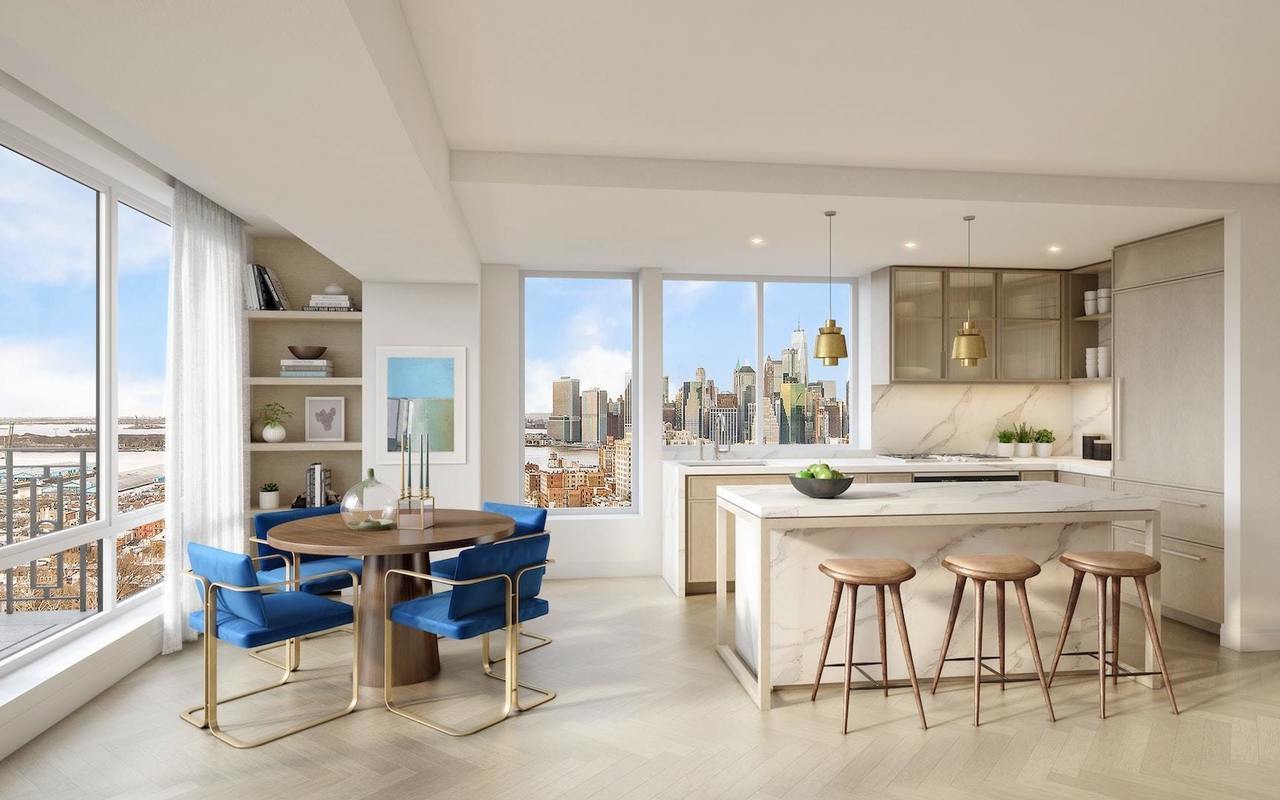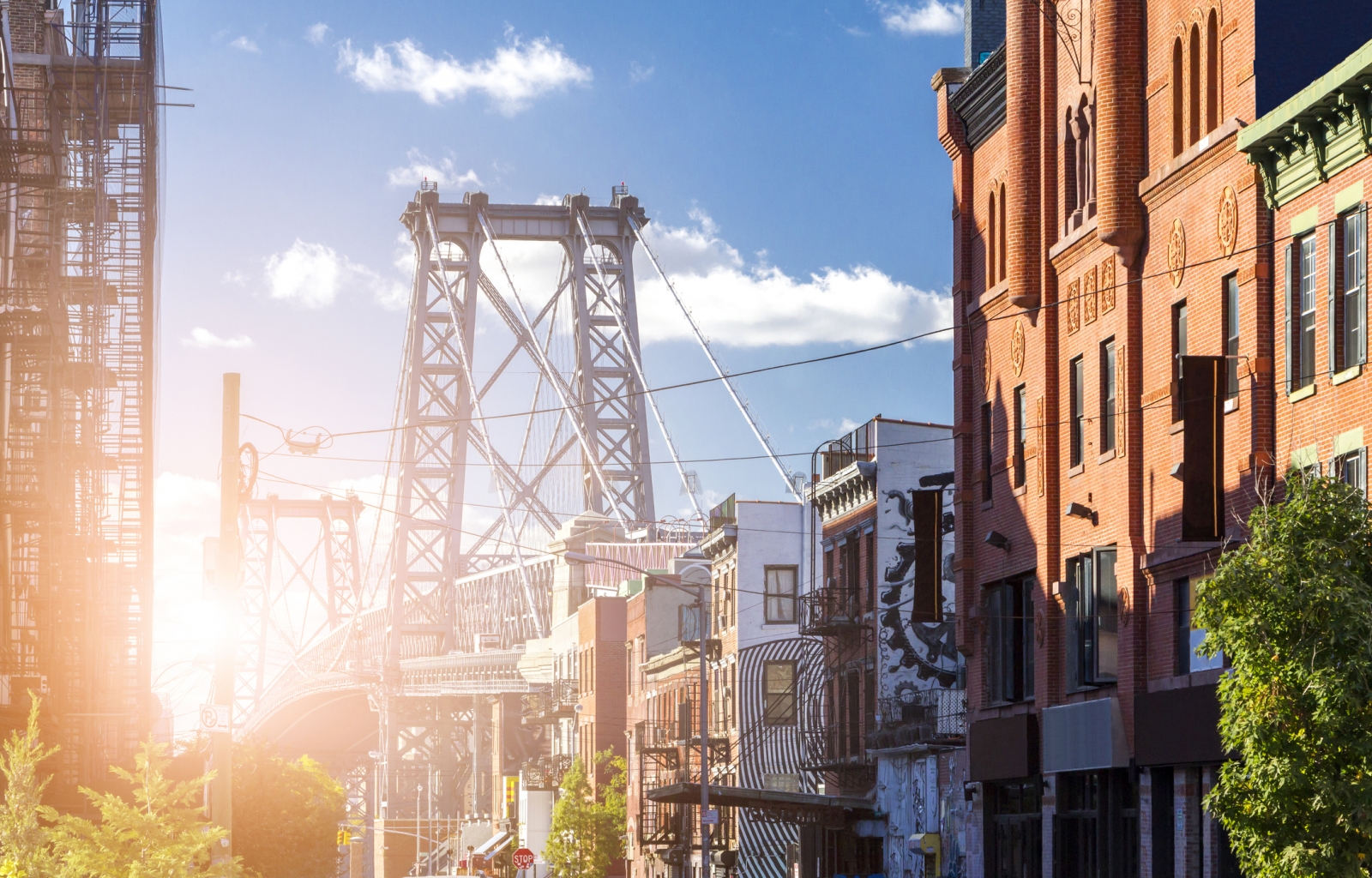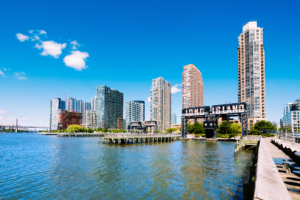In New York City, bridges and tunnels are often associated with terrible traffic and dodgy parts of town. They are the gateways between the boroughs and New Jersey, and without them, Manhattan would be a very isolated island. Neighborhoods near this infrastructure have often been neglected for residential living, but over the last couple of decades, with developers seeking new opportunities, there’s been an increase in condo, co-op and rental buildings rising close to bridges and tunnels.
Why would anyone want to live close to a bridge or tunnel? Most people don’t go into an apartment search with that criteria in mind, but end up seeing properties that abut one or the other. So let’s explore some of the pros and cons of living close to bridges and tunnels.
The Pros of Living Near Bridges and Tunnels in NYC
A Waterfront Location
If you’re living next to a bridge or tunnel, chances are you’re living pretty close to the waterfront. Whether it’s on the Hudson River or the East River, waterfront living has become a sought-after luxury. It comes with many perks, such as easy access to parks, bike paths, and recreational activities. Buildings on the waterfront are often flush with views, too, whether of the city or water. If you’re lucky, you could land one of those iconic NYC scenes with a bridge in the background.

The view from 67 Livingston St. #3, in Brooklyn Heights.
New Development Amenities
One advantage of living near bridges or tunnels is that these areas tend to be filled with new developments. Since much of this land was once commercial or industrial, many of the old buildings have been converted to residential use — and they can be a treat to live in. New developments in general have many benefits, including amenities like roof decks, lounges, fitness centers, and more.
Convenient Transportation
Whether you’re into riding the subways or taking Ubers and taxis, living next to bridges and tunnels gives you easy access to the city. Whether you want to get in or out of Manhattan, your options will be plentiful. Generally there will be subway stations close to tunnels, and plenty of cabs coming and going. Want to hop from Manhattan to Brooklyn? Queens to Manhattan? It all becomes quite easy.
The Cons of Living Near Bridges and Tunnels in NYC
Bad Traffic
It should be no surprise that bridges and tunnels are magnets for traffic. Their congestion can come from multiple sources, including cars, trucks, motorcycles, bikes, pedestrians and subways. This has several effects on nearby neighborhoods. For one, bridges and tunnels are major sources of noise, whether it’s cars honking, trucks rumbling or subways rattling over a bridge. And with so much traffic, these areas can feel somewhat grungy and dirty. Many of these areas are also being redeveloped to allow more room for pedestrian thoroughfares and bike paths, which brings us to their next negative feature.
Construction Headaches
Bridges and tunnels need to be consistently maintained, which means regular construction. That can be a nuisance for commuters, of course, and an even greater hassle for nearby residents. Construction on bridges can create noise that echoes off the steel and vibrates through entire neighborhoods. And work on tunnels and bridges can exacerbate these areas’ already-bad traffic situation.
Potential Lack of Features
Neighborhoods abutting bridges and tunnels have long been perceived as transient — places better for passing through than staying in. Bridges and tunnels are the only way on and off the island of Manhattan, except for a ferry or a helicopter. Areas adjacent to them have often lacked shops, restaurants, and the other kinds of features that help create a neighborhood. However, as development has picked up and attracted more residents to these neighborhoods, they are quickly becoming more desirable places to live.
Overall
Now that you’ve learned the pros and cons of living next to bridges and tunnels, you’ll be in a better place to make an educated decision. Do the pros outweigh the cons? That’s for you to decide, on a case-by-case basis. Just make sure you keep an open mind in the search for your next apartment.
—
Hey, why not like StreetEasy on Facebook and follow @streeteasy on Instagram?










